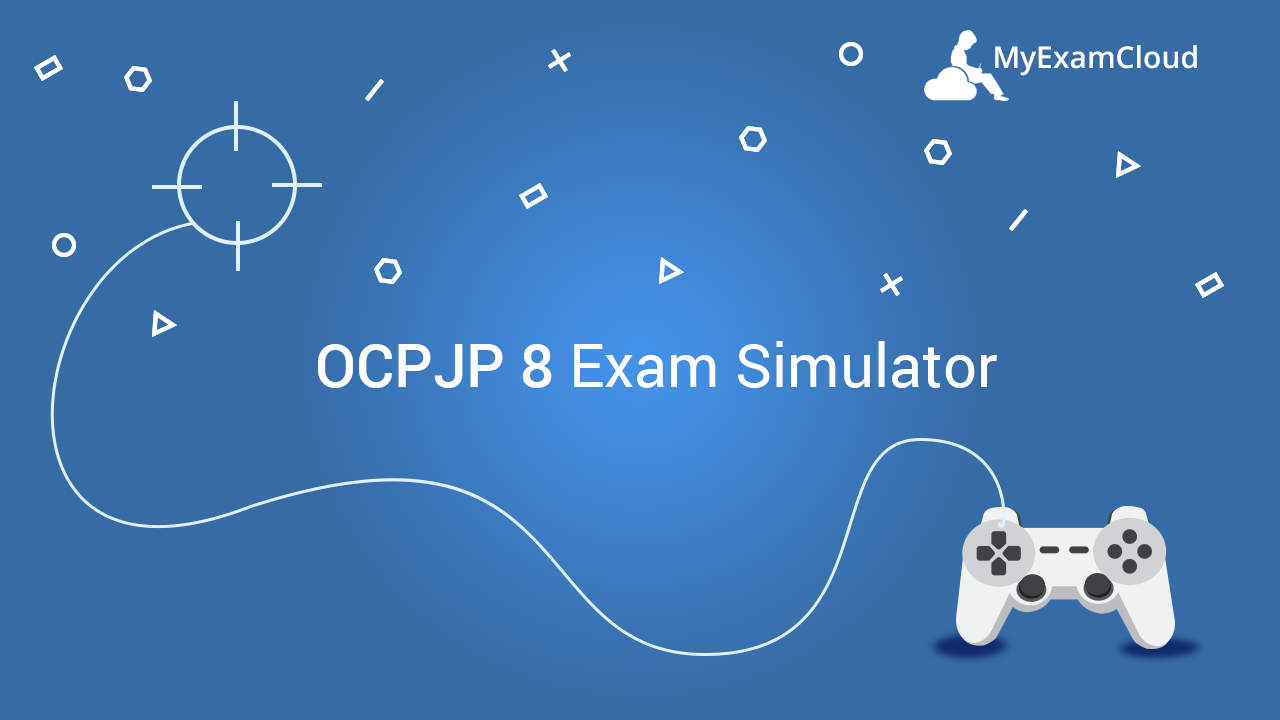
MyExamCloud OCPJP 8 Exam Simulator you to pass the examination in first try. Prepare with one of the quality OCPJP 8 Study Course developed by Java Certified Experts.
What are the topics covered in MyExamCloud OCPJP 8 Exam Simulator ?
You must cover the following exam topics for OCPJP 8 Preparation:Java Class Design
- Implement encapsulation
- Implement inheritance including visibility modifiers and composition
- Implement polymorphism
- Override hashCode, equals, and toString methods from Object class
- Create and use singleton classes and immutable classes
- Develop code that uses static keyword on initialize blocks, variables, methods, and classes
- Develop code that uses abstract classes and methods
- Develop code that uses the final keyword
- Create inner classes including static inner class, local class, nested class, and anonymous inner class
- Use enumerated types including methods, and constructors in an enum type
- Develop code that declares, implements and/or extends interfaces and use the @Override annotation.
- Create and use Lambda expressions
- Create and use a generic class
- Create and use ArrayList, TreeSet, TreeMap, and ArrayDeque objects
- Use java.util.Comparator and java.lang.Comparable interfaces
- Collections Streams and Filters
- Iterate using forEach methods of Streams and List
- Describe Stream interface and Stream pipeline
- Filter a collection by using lambda expressions
- Use method references with Streams
- Use the built-in interfaces included in the java.util.function package such as Predicate, Consumer, Function, and Supplier
- Develop code that uses primitive versions of functional interfaces
- Develop code that uses binary versions of functional interfaces
- Develop code that uses the UnaryOperator interface
- Develop code to extract data from an object using peek() and map() methods including primitive versions of the map() method
- Search for data by using search methods of the Stream classes including findFirst, findAny, anyMatch, allMatch, noneMatch
- Develop code that uses the Optional class
- Develop code that uses Stream data methods and calculation methods
- Sort a collection using Stream API
- Save results to a collection using the collect method and group/partition data using the Collectors class
- Use flatMap() methods in the Stream API
- Use try-catch and throw statements
- Use catch, multi-catch, and finally clauses
- Use Autoclose resources with a try-with-resources statement
- Create custom exceptions and Auto-closeable resources
- Test invariants by using assertions
- Create and manage date-based and time-based events including a combination of date and time into a single object using LocalDate, LocalTime, LocalDateTime, Instant, Period, and Duration
- Work with dates and times across timezones and manage changes resulting from daylight savings including Format date and times values
- Define and create and manage date-based and time-based events using Instant, Period, Duration, and TemporalUnit
- Read and write data from the console
- Use BufferedReader, BufferedWriter, File, FileReader, FileWriter, FileInputStream, FileOutputStream, ObjectOutputStream, ObjectInputStream, and PrintWriter in the java.io package.
- Use Path interface to operate on file and directory paths
- Use Files class to check, read, delete, copy, move, manage metadata of a file or directory
- Use Stream API with NIO.2
- Create worker threads using Runnable, Callable and use an ExecutorService to concurrently execute tasks
- Identify potential threading problems among deadlock, starvation, livelock, and race conditions
- Use synchronized keyword and java.util.concurrent.atomic package to control the order of thread execution
- Use java.util.concurrent collections and classes including CyclicBarrier and CopyOnWriteArrayList
- Use parallel Fork/Join Framework
- Use parallel Streams including reduction, decomposition, merging processes, pipelines and performance.
- Describe the interfaces that make up the core of the JDBC API including the Driver, Connection, Statement, and ResultSet interfaces and their relationship to provider implementations
- Identify the components required to connect to a database using the DriverManager class including the JDBC URL
- Submit queries and read results from the database including creating statements, returning result sets, iterating through the results, and properly closing result sets, statements, and connections
- Read and set the locale by using the Locale object
- Create and read a Properties file
- Build a resource bundle for each locale and load a resource bundle in an application
Access MyExamCloud OCPJP 8 Practice Tests Study Plan here.
Comments
Post a Comment